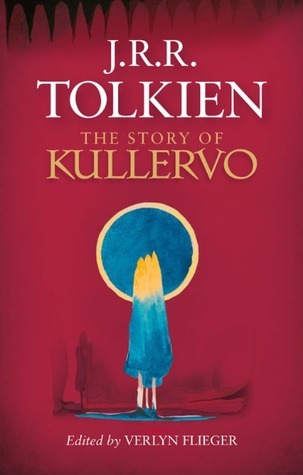This is a wonderful retelling of sorts from a Finnish epic poem called Kalevala. I’ve never read it before, so the The Story of Kullervo by JRR Tolkien was brand new for me. But, at the same time, it felt very familiar. Those familiar with Tolkien’s legendarium will likely recognize many aspects of the story as they relate to Tolkien’s major works. However, if you’ve zero interest in Tolkien, or in Finnish mythology, I think this might not be for you.
The story is a simple one. Jealous brothers feud leading to the murder of one. A son survives and vows vengeance. Son delivers vengeance but simultaneously causes his own destruction and ruin. Yet, the difference is in how it is told. Tolkien’s descriptive style is evident and the language he uses is beautiful. It flows well, though readers more accustomed to contemporary literature may find it a chore as the sentence structure can vary from modern works. The singular defining part is the ballad by the smith’s wife, a long prayer asking the gods for protection over her livestock even as she plots against Kullervo. It is also the smith’s wife who curses Kullervo in the end.
The story itself is incredibly short, taking up perhaps a third of the book, with another third being made up of Tolkien’s essays on Kalevala and another third for the introduction. One of the things I really disliked, however, about The Story of Kullervo, was the sudden change in names! One second, the child was called Kullervo. Then he was Sakehonte?, then Saki. The hound went from Musti to Mauri. Perhaps this was do to Tolkien himself changing his mind on which name to use, or perhaps using different names as the elves in the Silmarillion have (eg Curufinwe and Feanor, or Amras and Pityafinwe or Ambarussa). Either way, it was confusing.
The similarities to other works of Tolkien are plentiful in The Story of Kullervo. With Kullervo, you see hints of Feanor’s anger and hatred toward siblings. But, more accurately, Kullervo represents Turin Turambar in his ultimate fate. The final scene between Kullervo and Wanona is reminiscent of the initial meeting between Eol and Aredhel. Untamo himself seems an early precursor to Melkor or Mairon in his evil designs and cruelty. The smith’s wife’s curse rings back to Eol’s curse on Maeglin. There are so many parallels that can be drawn from Kullervo to various works of Tolkien, it truly makes the story enjoyable. It, at times, feels like a familiar friend.
So, ultimately, if you’re a Tolkien nerd, you’ll enjoy the book. I particularly liked the essay after the story, as it was interesting to see Tolkien’s own words and ideas about mythology written out so clearly. If you’re just a fantasy fan with no real interest in Tolkien or Finnish lore, you might be better off checking this one out from the library


